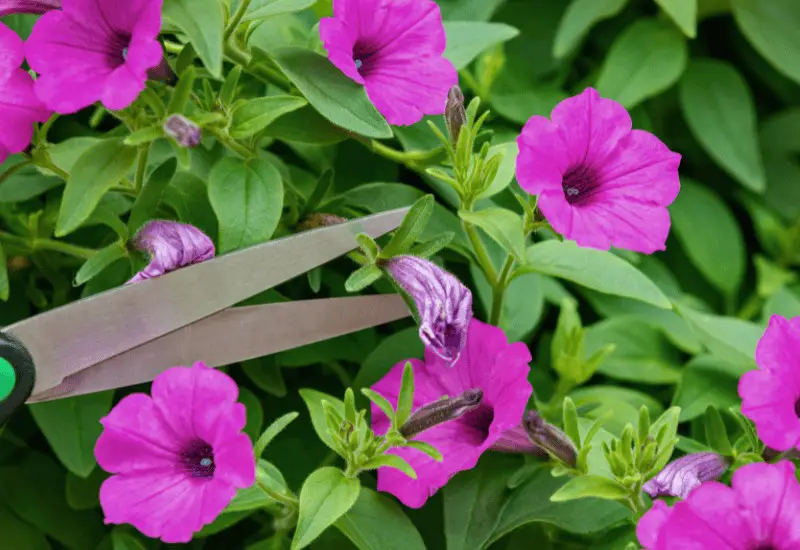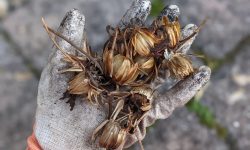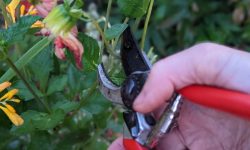Petunias are beloved for their vibrant colors and long-lasting blooms, making them a favorite choice for gardeners who want an eye-catching display throughout the summer. But even the healthiest petunias can begin to look tired and sparse if spent flowers are left on the plant. Learning how to deadhead petunias the right way is the key to keeping them blooming profusely. By removing old flowers correctly and consistently, you encourage the plant to redirect its energy toward producing new blooms, rather than forming seeds.
Deadheading petunias isn’t just about maintaining a tidy appearance. It’s a vital gardening practice that has a significant impact on the health and flowering potential of your plants. If you’ve ever noticed your petunias slowing down mid-season, or becoming leggy and less colorful, improper or infrequent deadheading could be the cause. This guide will walk you through the process in full detail so you can enjoy endless blooms from your petunias all season long.
Understanding the Basics of Petunia Flowering

Petunias naturally produce flowers in abundance, but each bloom has a limited lifespan. Once a flower begins to fade and die, the plant enters a reproductive phase, putting energy into seed development rather than new blossoms. This natural cycle can drastically reduce the plant’s floral output if left unmanaged. Deadheading interrupts this cycle by removing the faded blooms before seeds can form, stimulating the plant to continue its effort to reproduce by producing more flowers.
There are several types of petunias, including grandiflora, multiflora, milliflora, and spreading varieties like wave petunias. While they all benefit from deadheading, some types require more frequent attention than others. For example, grandiflora petunias with their large, showy blooms are particularly prone to becoming straggly if not regularly maintained. Understanding your specific variety will help you determine how often to deadhead and what technique works best.
Environmental factors also influence flowering behavior. Petunias that grow in ideal conditions—ample sunlight, well-drained soil, and regular feeding—will produce more blooms and therefore require more frequent deadheading. Those under stress due to heat, drought, or poor nutrition may flower less vigorously, but deadheading still plays a crucial role in improving their performance and resilience.
Why Deadheading Is Essential for Petunias
Deadheading provides both aesthetic and physiological benefits to petunias. Visually, it prevents the buildup of wilted, brown flowers that detract from the plant’s vibrant appearance. It keeps your hanging baskets, containers, or flower beds looking fresh and appealing day after day. But beneath the surface, the plant’s internal processes are also influenced significantly by this practice.
When old flowers are removed, petunias channel their energy into generating new buds and branching growth. This creates fuller, more compact plants with a greater volume of flowers. Without deadheading, petunias can become leggy and sparse, and the flowering cycle slows down dramatically. Removing spent blooms essentially sends a signal to the plant that its job isn’t finished, encouraging continuous blooming throughout the growing season.
Another reason to deadhead petunias is to minimize the risk of fungal disease. Wilted flowers can trap moisture and invite mildew or botrytis blight, particularly in humid climates or after rain. By clearing away the decaying flowers, you not only improve the plant’s health but also reduce the chance of infection that could spread to healthy tissues.
When to Start Deadheading Petunias
The best time to begin deadheading petunias is as soon as the first blooms begin to fade. This typically occurs a few weeks after planting, especially in early summer. Watching your petunias closely during this time will help you recognize the signs that a flower is past its prime. These include fading color, browning edges, and a shriveled appearance. Once these signs are visible, it’s time to act.
Deadheading is not a one-time activity—it should be repeated throughout the growing season. Depending on the weather and how vigorously your petunias are growing, you may need to deadhead every few days. During peak bloom periods in midsummer, petunias can produce dozens of flowers per week, and staying on top of deadheading becomes essential to maintain their full potential.
Timing also matters during the day. Ideally, deadhead petunias during the morning or early evening when the sun isn’t too harsh. This helps reduce stress on the plant and allows any sap or stem wounds to dry before nighttime moisture sets in. If your petunias are in containers or hanging baskets, it may be easier to rotate them during deadheading for better access to all sides.
How to Identify Spent Blooms Correctly
Recognizing which flowers need to be removed is an important part of deadheading. Spent blooms often retain some of their color at first, making it tricky to know when to snip. Look closely at the base of each flower. If you see the petals starting to wilt and a seed pod forming, it’s time to remove it. The seed pod is a small green or brown bulb located where the flower attaches to the stem.
Some gardeners mistakenly remove only the petals or the visible part of the bloom. While this does improve appearance, it doesn’t stop seed production. The correct method involves removing both the faded petals and the swelling pod below them. Doing this thoroughly ensures that the plant doesn’t waste energy trying to produce seeds from a flower that no longer serves its purpose.
It’s also important to distinguish between healthy buds and fading flowers. Petunia buds are usually compact and pointed, with firm petals just beginning to emerge. In contrast, spent flowers look soft, loose, and often begin curling at the edges. Taking a moment to inspect each flower carefully before removal will ensure you don’t accidentally cut off potential blooms.
The Proper Way to Deadhead Petunias by Hand
Deadheading petunias can be done effectively by hand without the need for tools. Using your fingers, gently pinch the flower stem just below the base of the faded bloom, including the seed pod if visible. Use your thumb and forefinger to remove the entire structure in one motion. If the stem is thin and pliable, this method is quick, effective, and prevents accidental damage to surrounding growth.
Your goal is to remove not just the flower but the reproductive structure behind it. If you only pull away the petals, the plant may still interpret that flower as viable and continue putting energy into it. Pinching below the bloom ensures that the entire flower and any developing seeds are eliminated, redirecting the plant’s energy toward new growth.
Always be gentle during this process. Petunia stems are relatively soft and can break easily if handled too roughly. Take care not to tear the stems or remove surrounding buds, especially on younger plants with tender growth. With regular practice, hand deadheading becomes a fast and intuitive part of your garden routine.
Using Scissors or Pruners for Larger Plants
For mature or heavily blooming petunias, especially those in landscape beds or large containers, using a clean pair of scissors or garden pruners may be more efficient. This method allows for precision, especially when flowers are dense or located deep within the foliage. Always use sharp, sterilized tools to prevent disease transmission and make clean cuts.
Hold the stem firmly just below the faded bloom and snip at a slight angle, taking care not to cut into neighboring stems or healthy buds. The angled cut helps water drain away from the wound and reduces the risk of rot. After cutting, inspect the plant for other spent flowers nearby and work methodically across the plant, ensuring no spent blooms are left behind.
Clean your tools regularly, especially if you’re working with multiple plants. Rinse blades with a mixture of water and rubbing alcohol between uses to kill bacteria or fungi. Keeping tools clean not only protects your petunias but also extends the life of your equipment.
How Deadheading Promotes Bushier Growth
Beyond encouraging more flowers, deadheading plays a role in shaping the overall growth of the plant. Removing old blooms prompts petunias to send out new side shoots, resulting in a denser and more compact growth habit. This is especially beneficial for varieties that tend to become leggy or spindly as the season progresses.
Bushier petunias have more surface area for flower production, which leads to an increase in both volume and frequency of blooms. The visual impact is immediate—plants appear fuller, more rounded, and vibrant. This growth response is nature’s way of compensating for the lost flowers and reflects the plant’s continued effort to reproduce.
You can further enhance this effect by occasionally trimming back long stems by a few inches, especially if they’re no longer producing new buds. Combined with deadheading, this mild pruning keeps your petunias in peak form, supporting vigorous growth through late summer and into fall.
How Often Should You Deadhead Petunias
The frequency of deadheading depends on how quickly your petunias are blooming and the type of variety you are growing. In general, most gardeners find that checking their petunias every three to five days is sufficient to keep plants looking their best. During periods of rapid growth or hot weather, you may need to deadhead more frequently to keep up with new flower production.
Spreading petunias like wave or Supertunia varieties tend to self-clean, meaning spent blooms drop off on their own. However, even these varieties benefit from occasional deadheading to encourage branching and maintain a tidy appearance. Don’t rely solely on the plant’s natural self-cleaning habits—removing faded flowers manually still helps promote continuous blooming.
Establishing a regular deadheading routine as part of your gardening schedule makes it easy to stay consistent. A few minutes each morning or evening can make a huge difference in the long-term health and performance of your petunias. Treat it as a relaxing garden ritual that brings immediate visual rewards.
Common Mistakes to Avoid While Deadheading
One of the most common mistakes when deadheading petunias is removing only the petals and leaving the seed pod behind. This oversight defeats the purpose of deadheading and can lead to reduced bloom production. Another mistake is waiting too long between deadheading sessions, which allows too many seed pods to form and signals the plant to slow down flowering.
Using dull or dirty tools is another frequent issue, as it can damage the plant and introduce pathogens. Always make sure your scissors or pruners are sharp and sanitized before each session. Cutting too close to the main stem or damaging new buds nearby can also weaken the plant and reduce future blooming potential.
Finally, avoid deadheading during the heat of the day or when the plant is under stress. Morning or late afternoon is ideal, especially when temperatures are moderate and the plant is well-hydrated. Taking these precautions ensures that deadheading enhances your petunias rather than inadvertently harming them.
Caring for Petunias After Deadheading
After deadheading, it’s important to support your petunias with proper care to ensure they respond with healthy new growth. Watering consistently, especially during dry spells, helps prevent stress and allows the plant to channel energy into producing fresh blooms. Avoid overhead watering to reduce the risk of fungal disease on new growth.
Fertilizing regularly is also crucial. Petunias are heavy feeders, and they respond well to balanced liquid fertilizers every one to two weeks. Choose a formula rich in phosphorus to promote flowering and support root health. Pairing fertilization with deadheading creates the perfect conditions for ongoing blooms and lush foliage.
Monitoring for pests and diseases after deadheading helps you catch any early signs of trouble. Aphids, spider mites, and mildew can all affect petunias, especially when airflow is limited or plants are overcrowded. Keeping the area around your plants clean and well-ventilated goes a long way in maintaining plant health.
The Long-Term Benefits of Regular Deadheading
Consistently deadheading your petunias doesn’t just benefit you this season—it sets the stage for stronger plants in the future. Plants that are encouraged to keep blooming build more robust root systems, adapt better to changing conditions, and often return more vigorously in the next season if grown as perennials in warmer zones.
For gardeners who collect seeds, deadheading may seem counterproductive. However, you can allow a few flowers to go to seed at the end of the growing season while still deadheading the majority. This compromise ensures that your display remains beautiful while giving you the option to save seeds for next year.
Ultimately, deadheading becomes second nature once you see the rewards. The transformation in your petunias—from sparse and struggling to lush and abundant—is both immediate and long-lasting. Your efforts are paid back in waves of color and life that brighten your garden every day.
FAQ about How to Deadhead Petunias
What is the best time of day to deadhead petunias?
The best time to deadhead petunias is in the morning or early evening when temperatures are cooler. This helps reduce plant stress and allows any cuts or broken stems to dry before nighttime moisture sets in, lowering the risk of fungal infections.
Do all types of petunias need to be deadheaded?
Most petunias benefit from deadheading, especially grandiflora and multiflora types. Some spreading varieties like wave petunias are self-cleaning but still benefit from occasional deadheading to maintain shape and encourage more blooms.
Can I use scissors to deadhead petunias?
Yes, using clean, sharp scissors or pruning shears is especially helpful for larger petunia plants or dense growth. This method allows for precision and reduces the risk of damaging surrounding healthy buds or stems.
How often should I deadhead my petunias?
Petunias should be deadheaded every few days during peak bloom periods. Regular attention ensures the plant redirects energy into producing new flowers rather than seed pods, resulting in continuous blooming throughout the season.
What happens if I don’t deadhead petunias?
Without deadheading, petunias will divert energy into seed production, leading to fewer blooms and a straggly appearance. Over time, this can significantly reduce the overall vigor and flowering capacity of the plant.
Conclusion
Learning how to deadhead petunias the right way for endless blooms is one of the most impactful skills you can develop as a gardener. By removing spent flowers consistently and carefully, you help your plants thrive, bloom longer, and maintain their vibrant beauty throughout the growing season. With a little attention, the simple act of deadheading transforms your petunias into a dazzling display that never quits.






